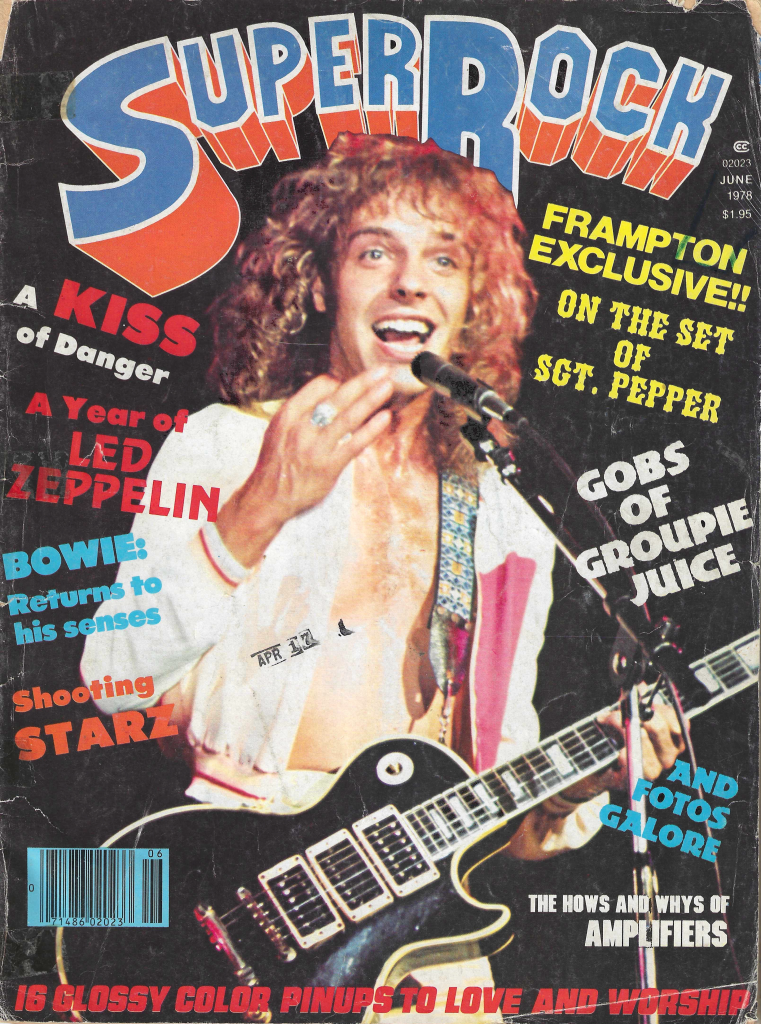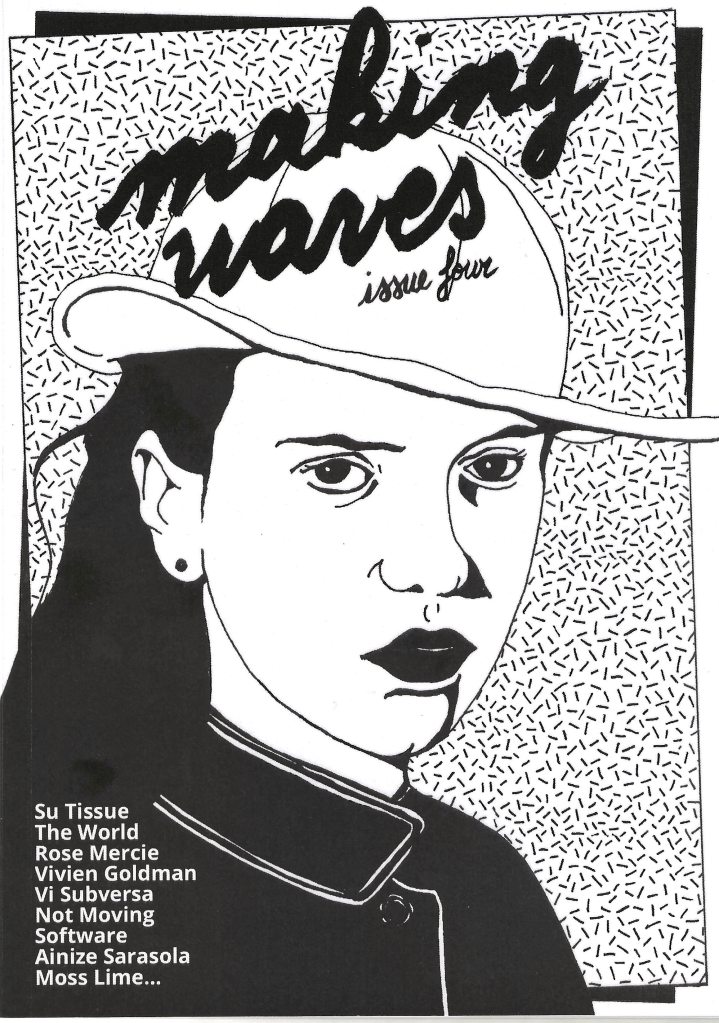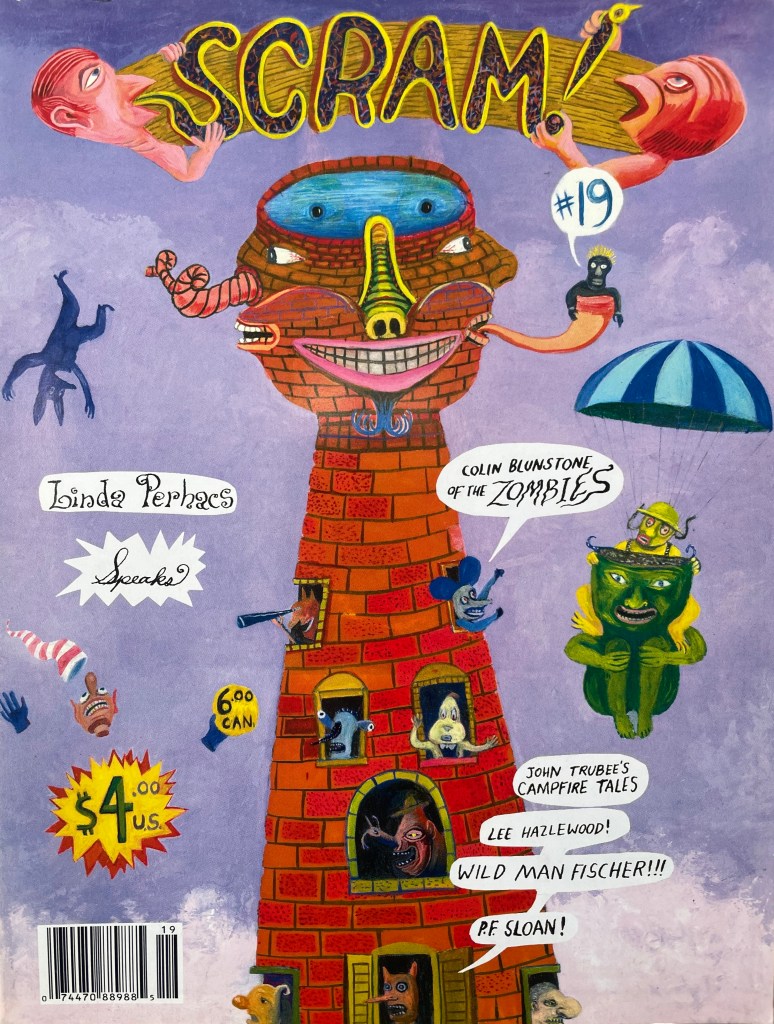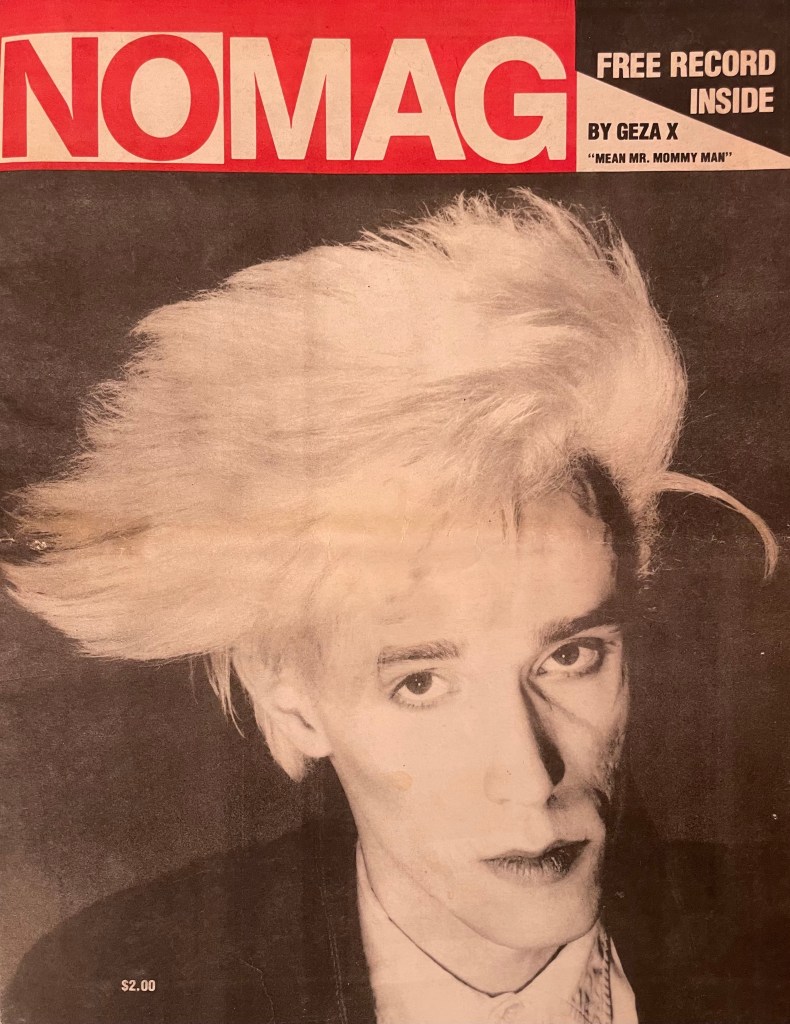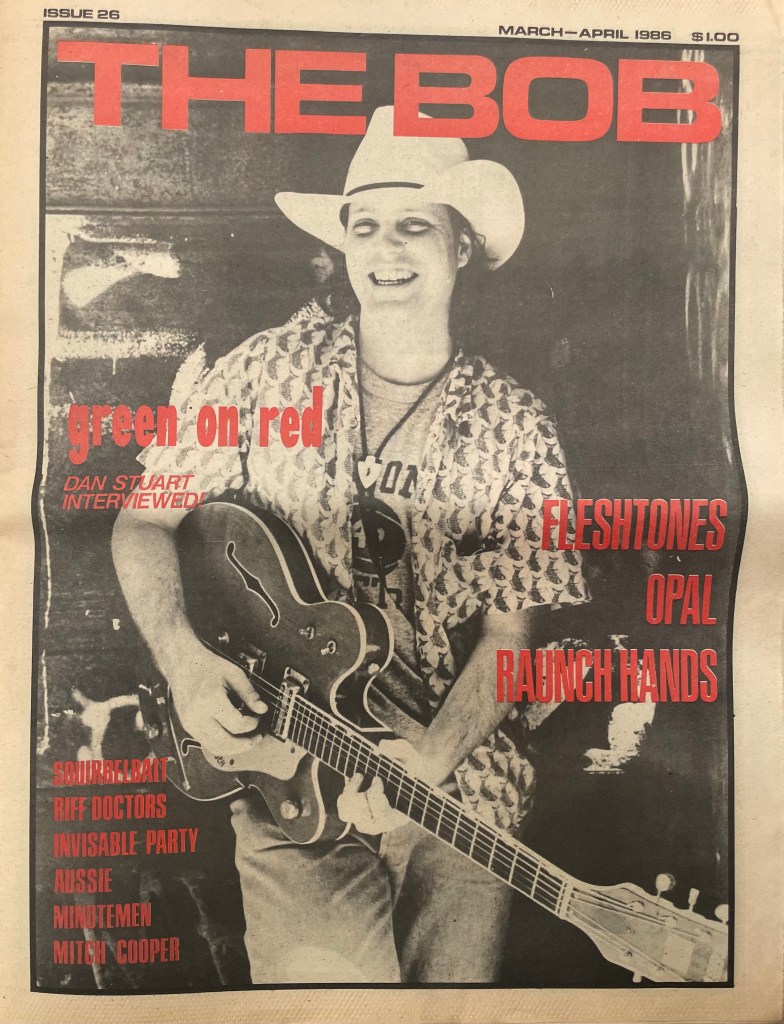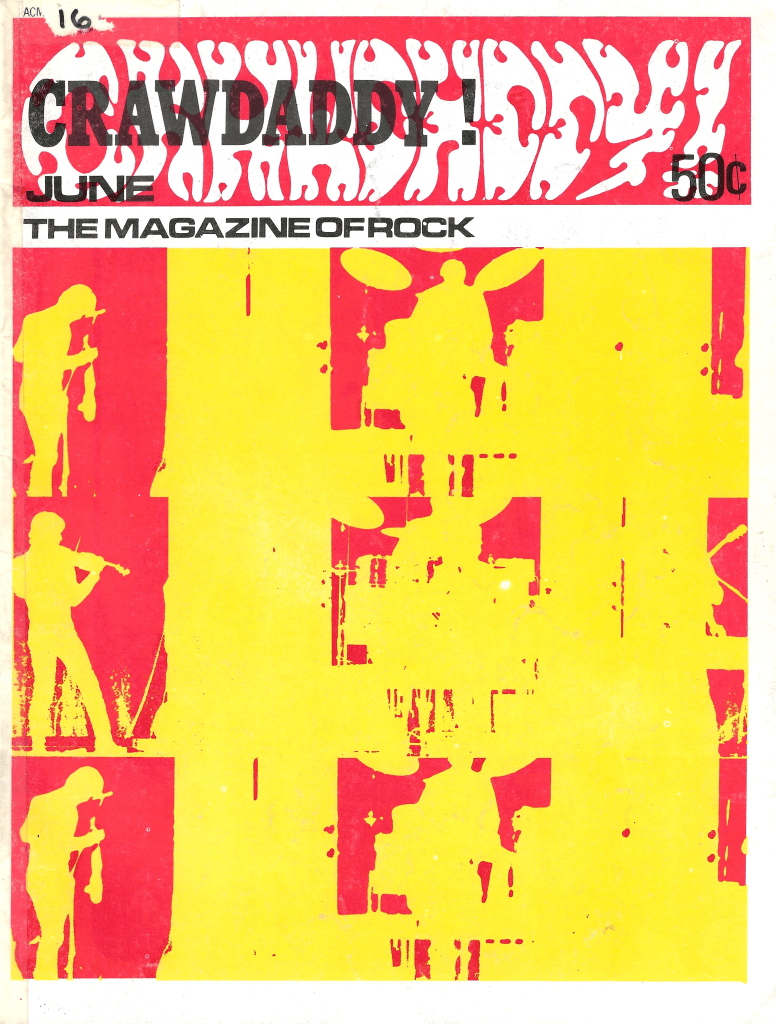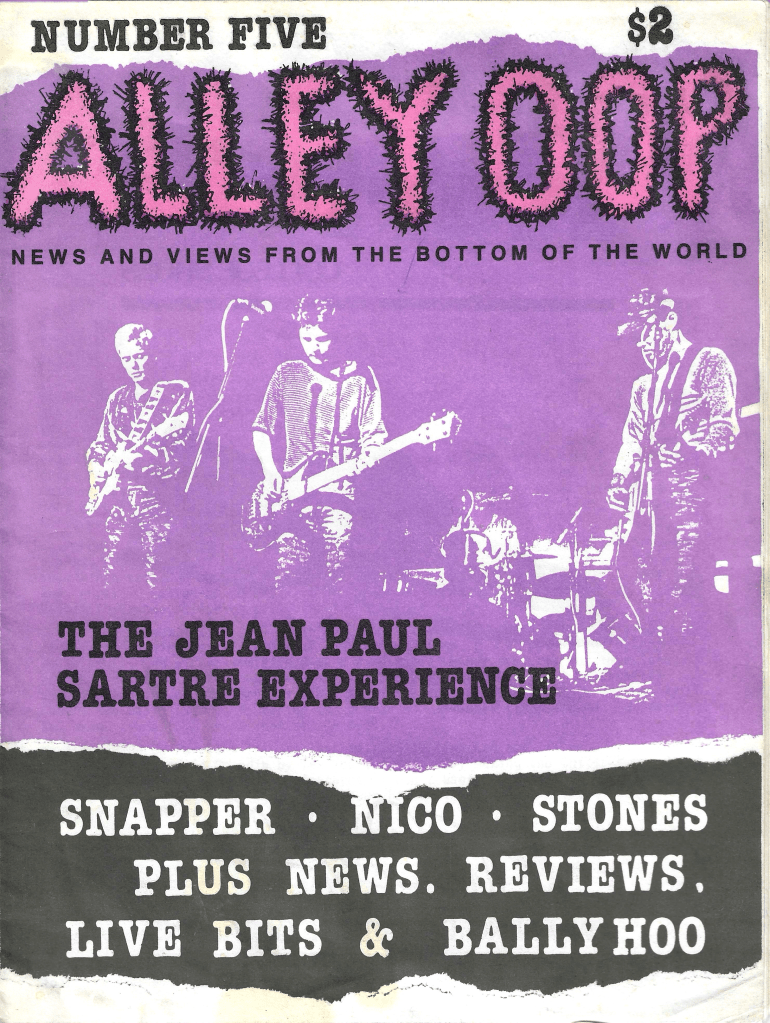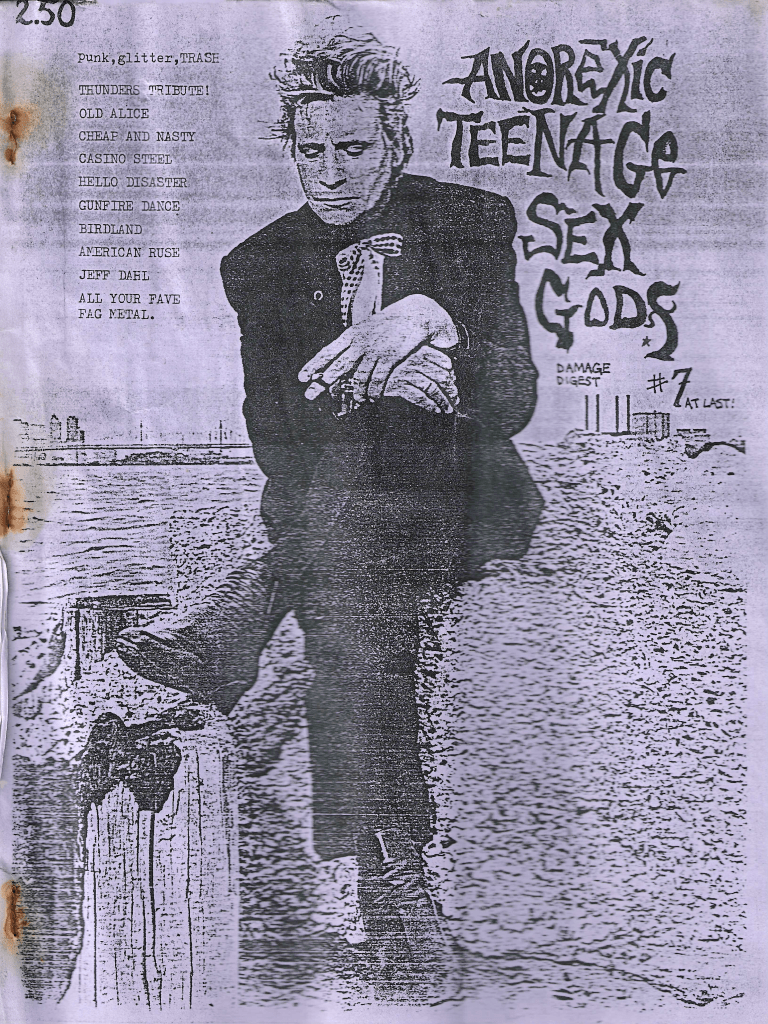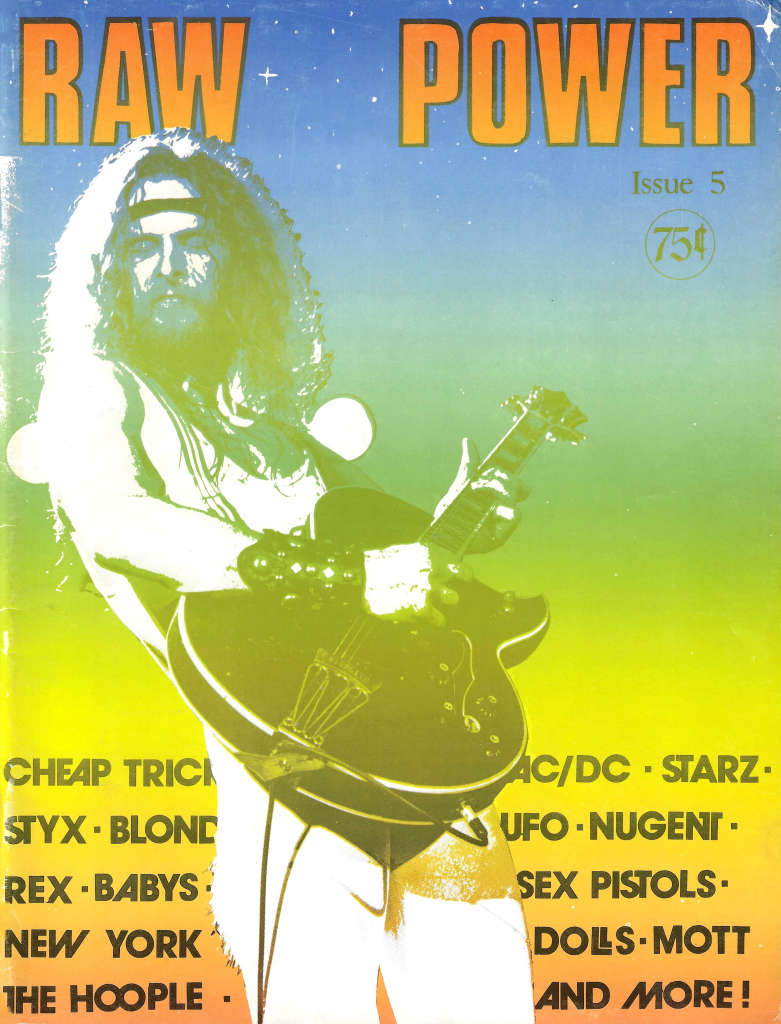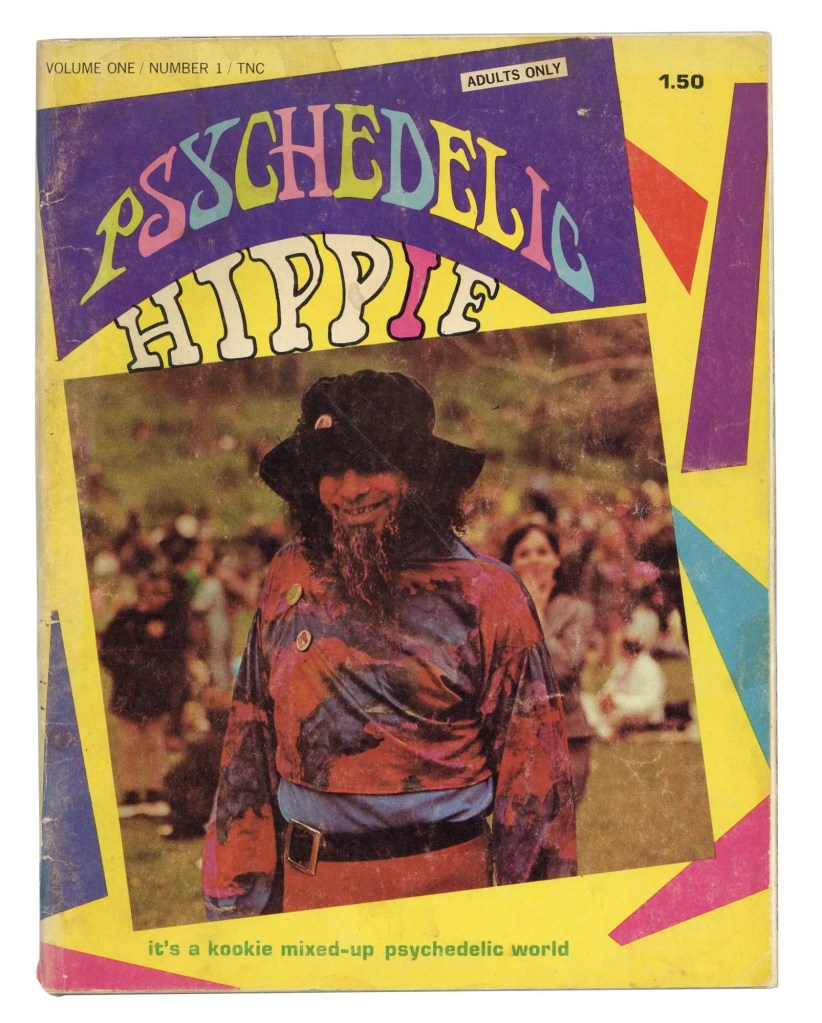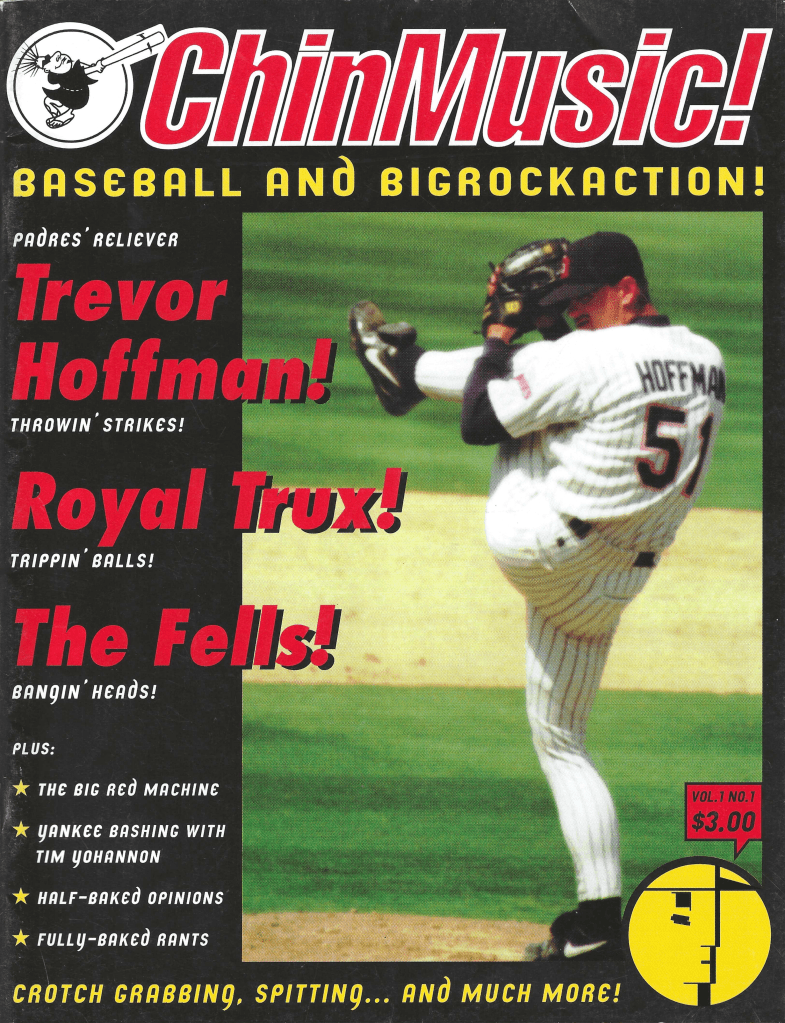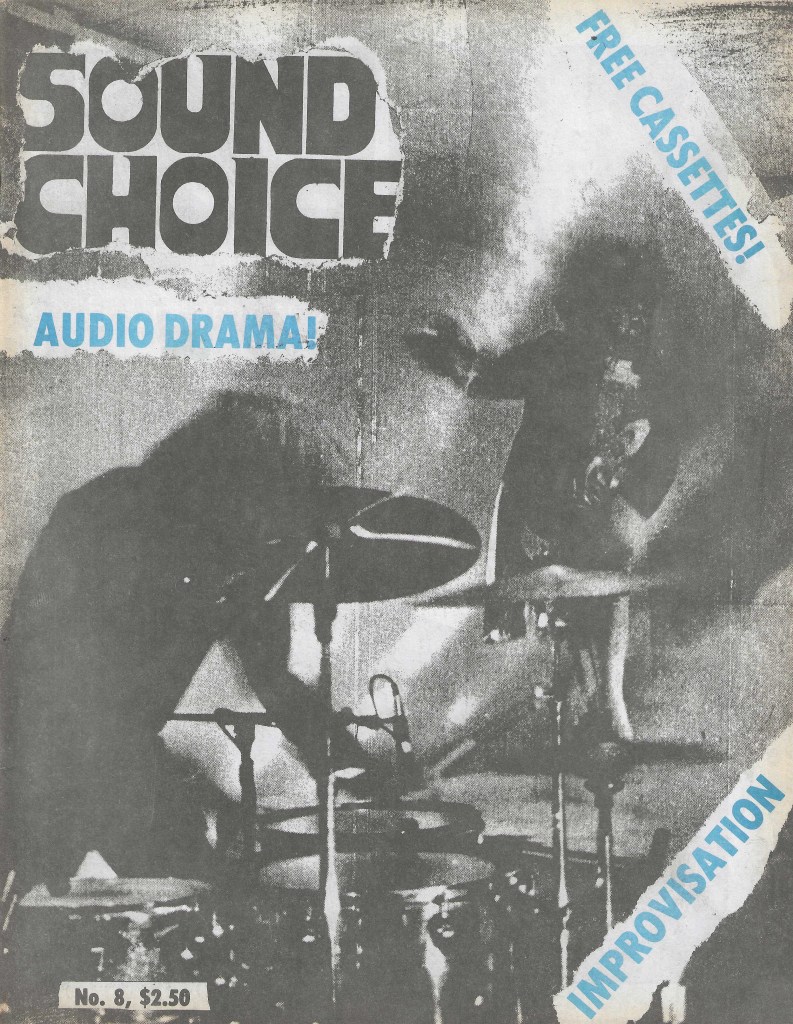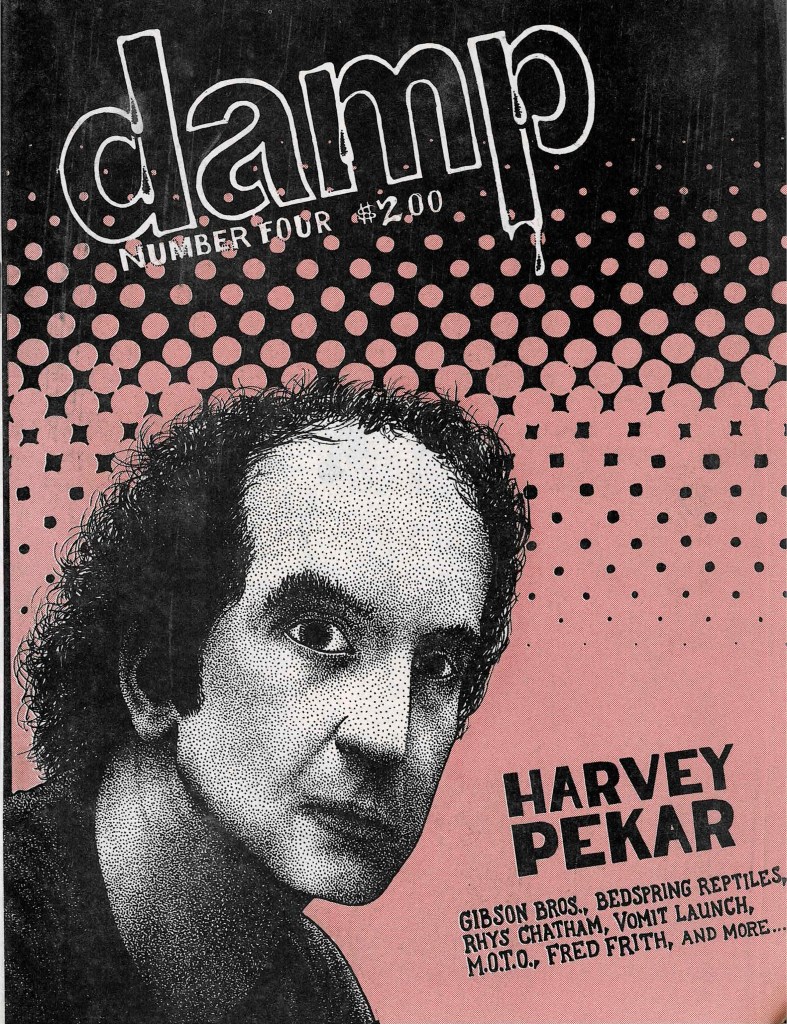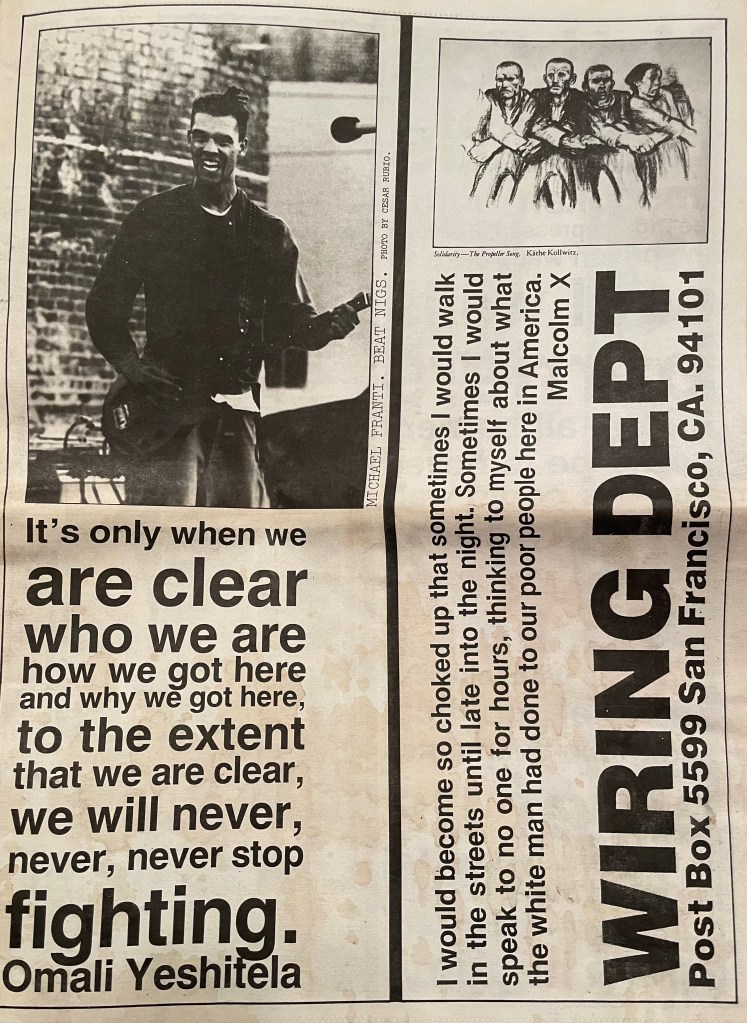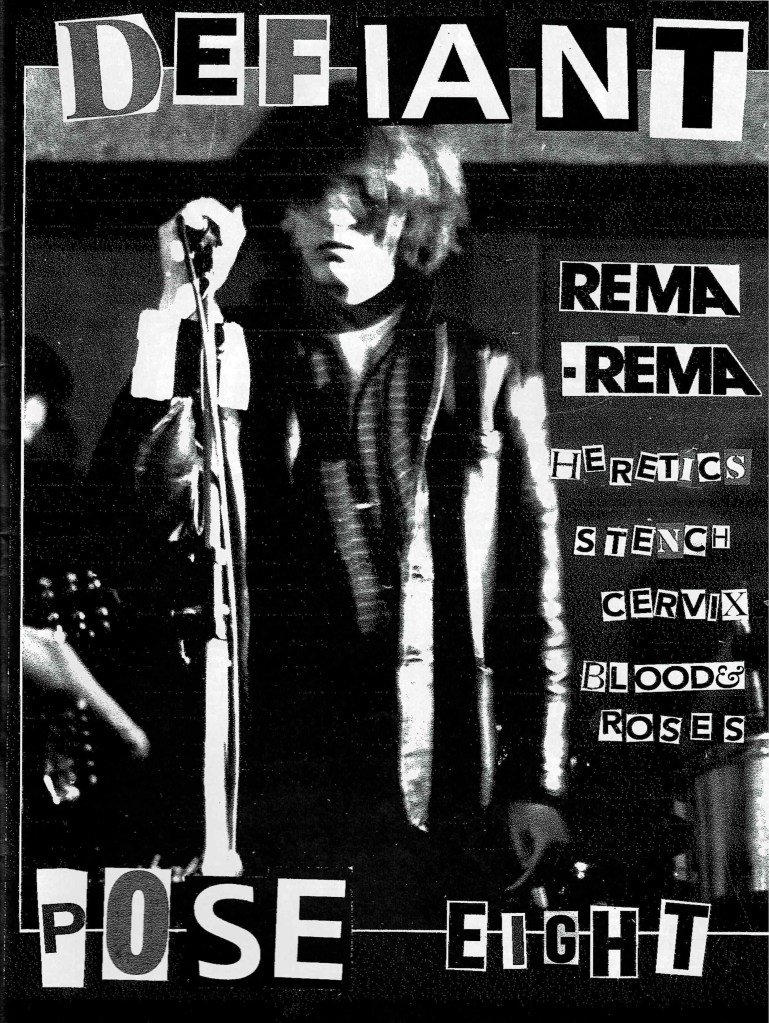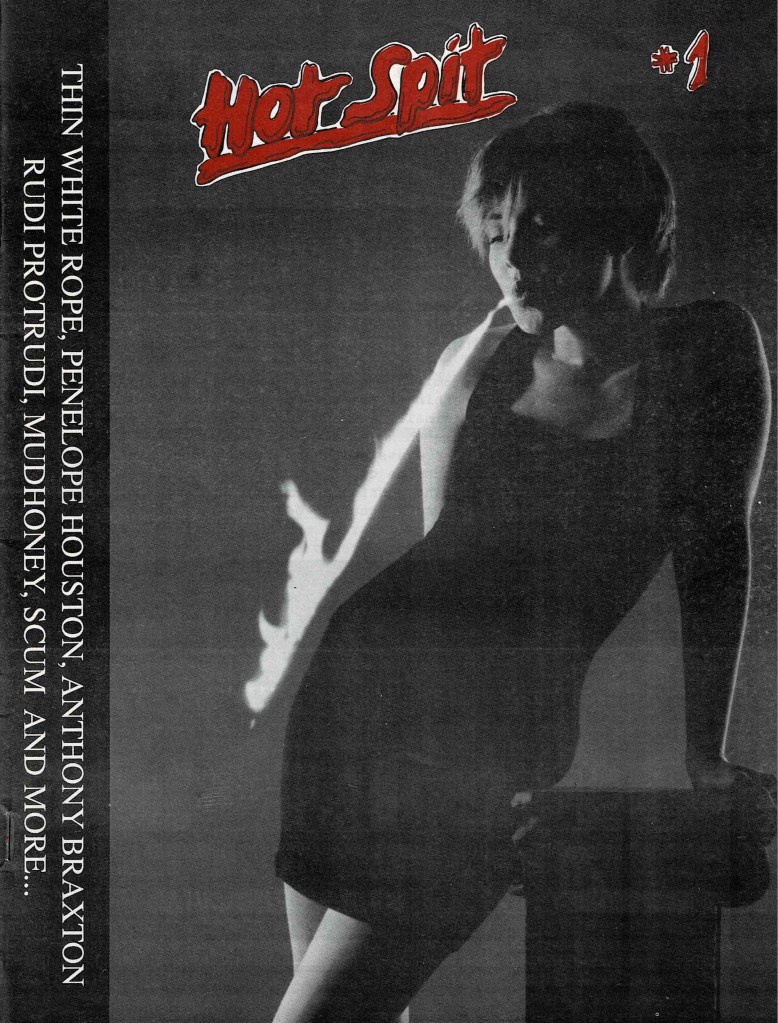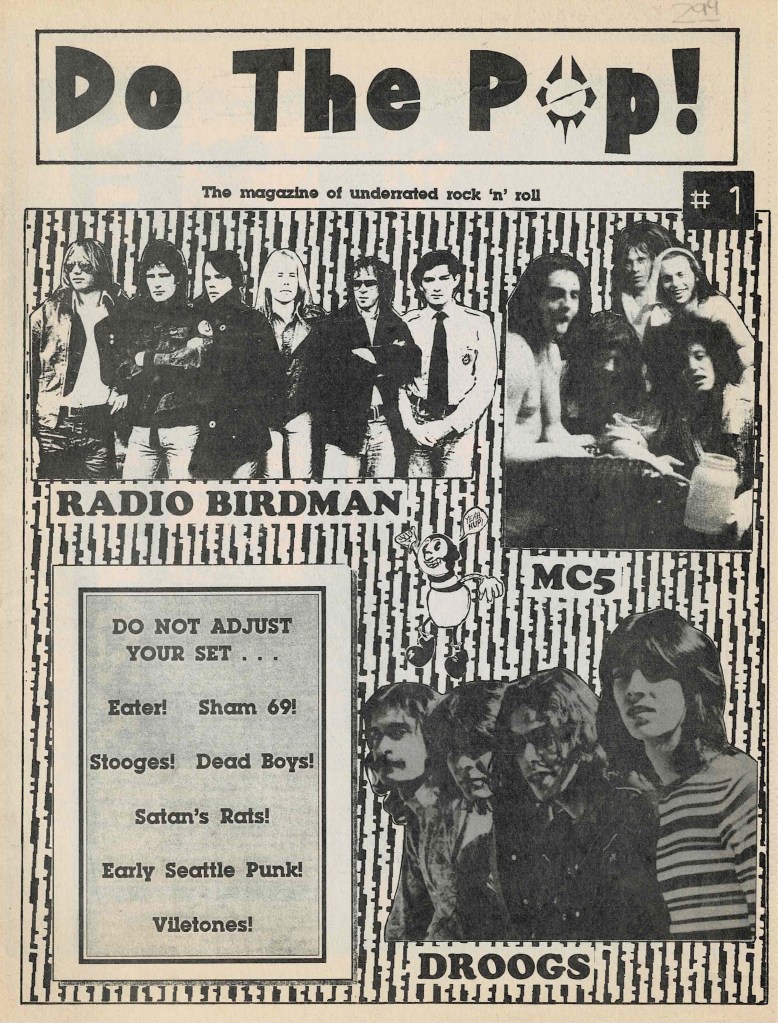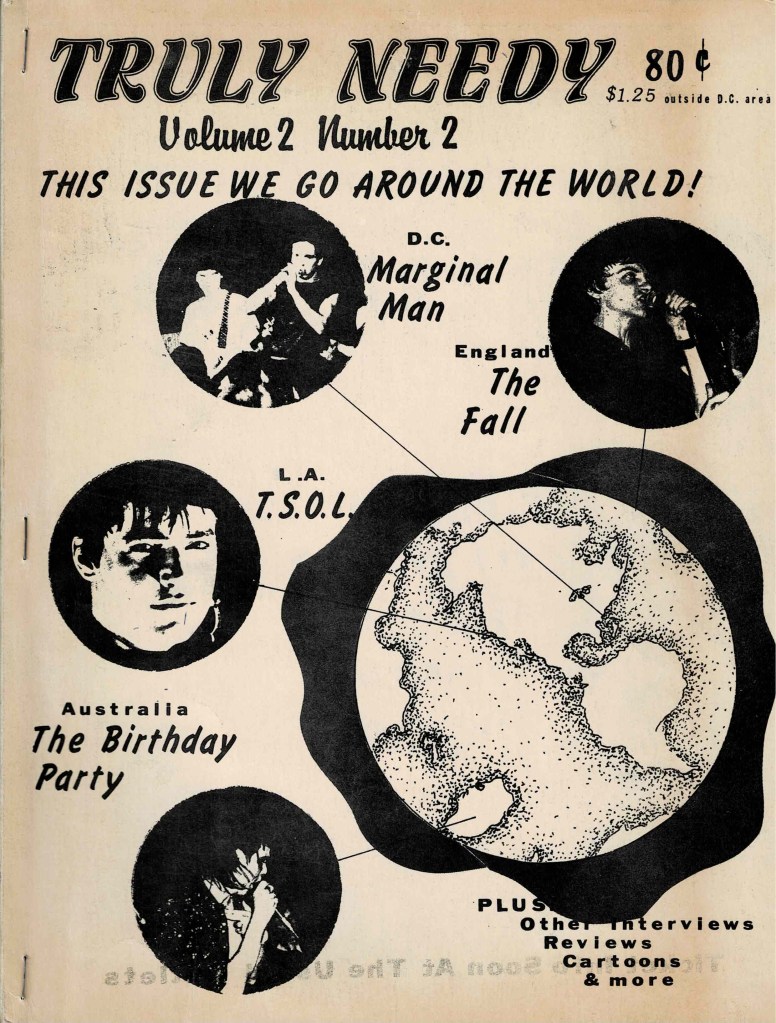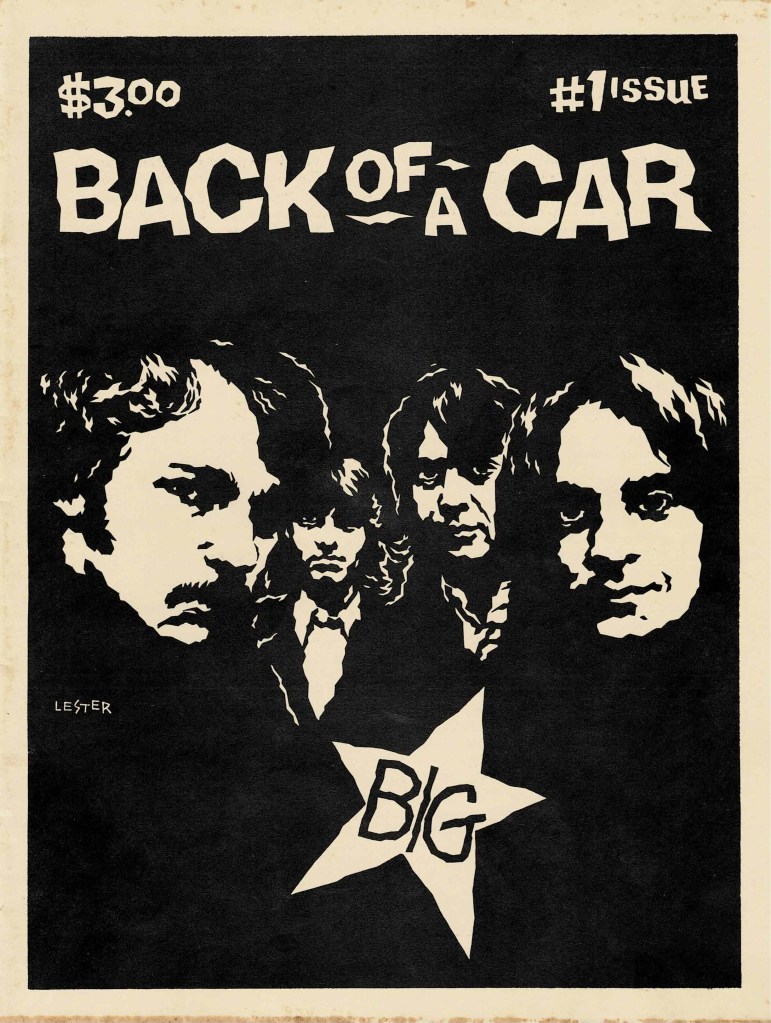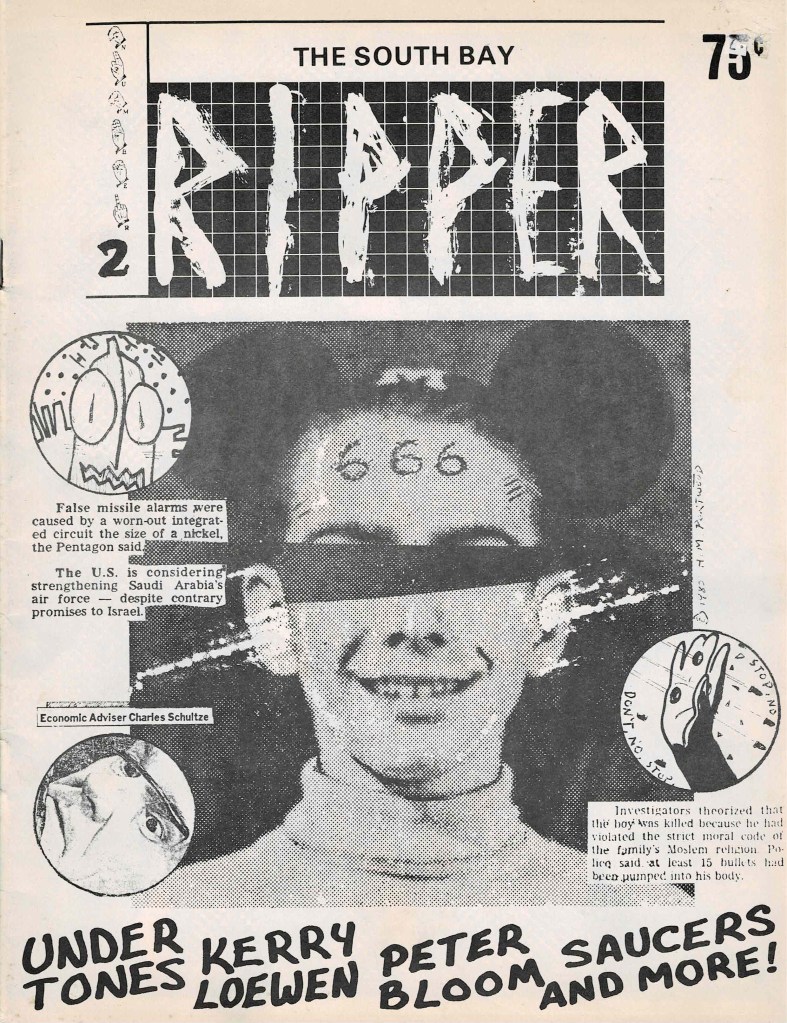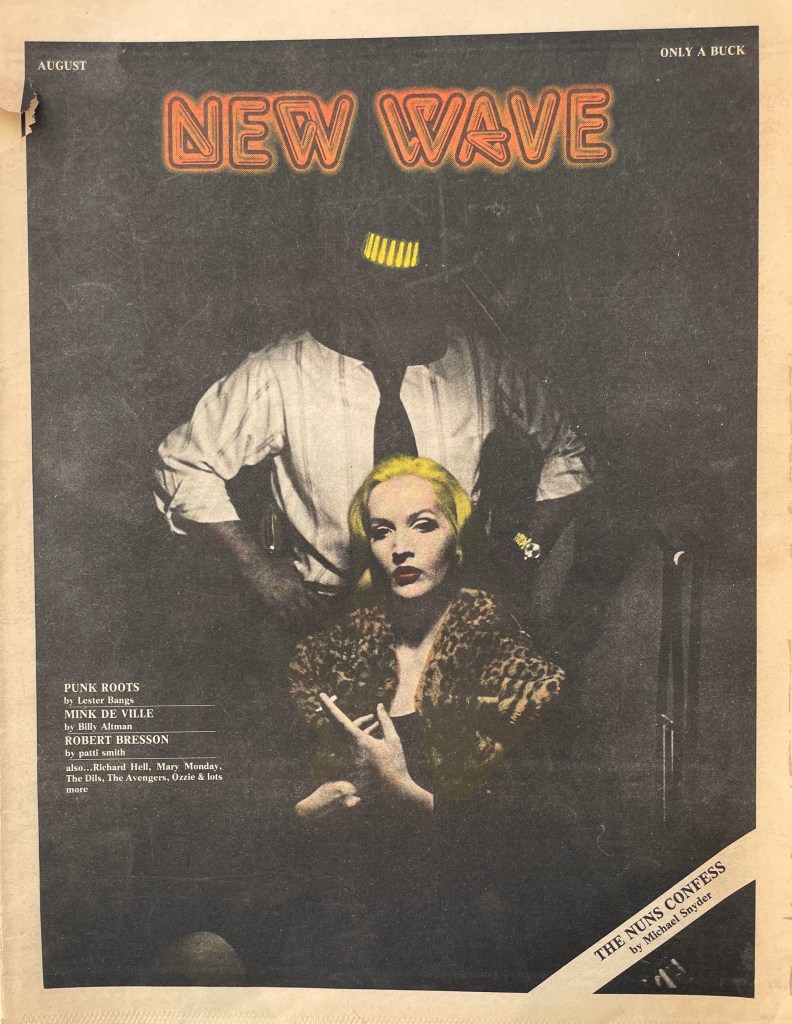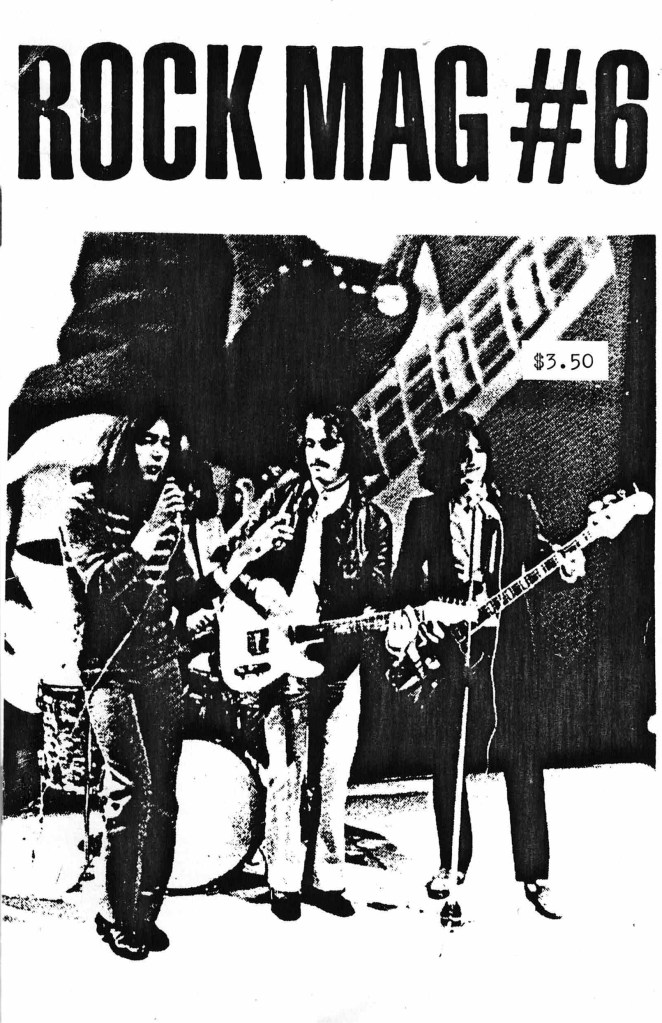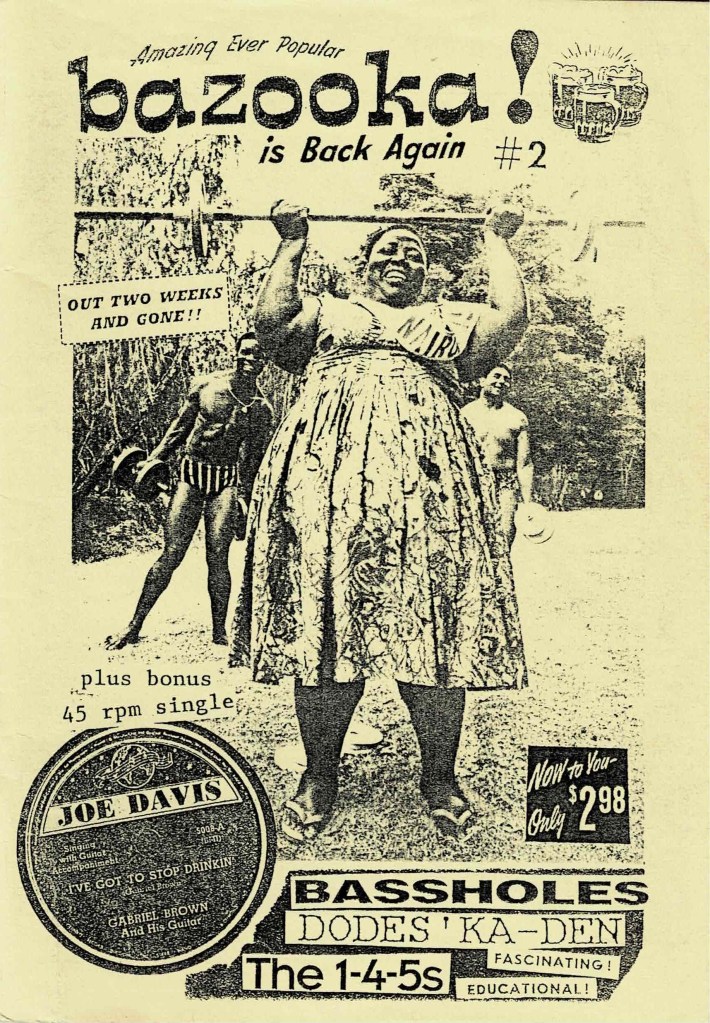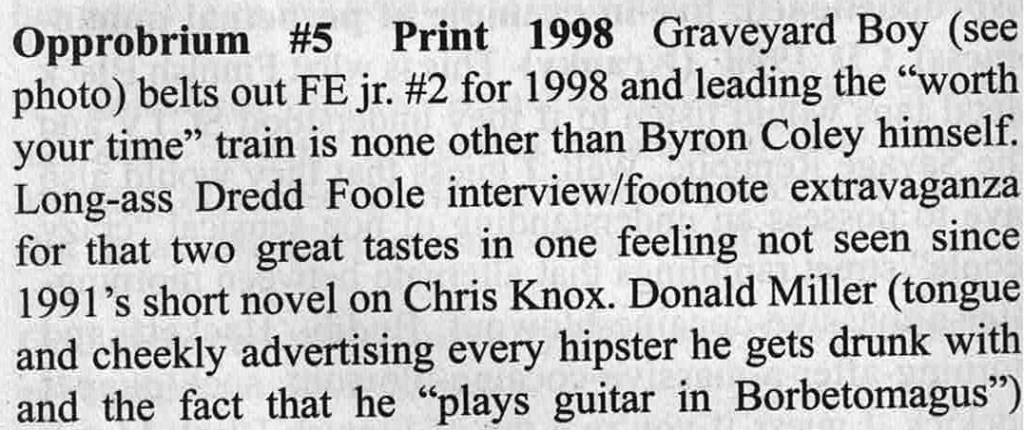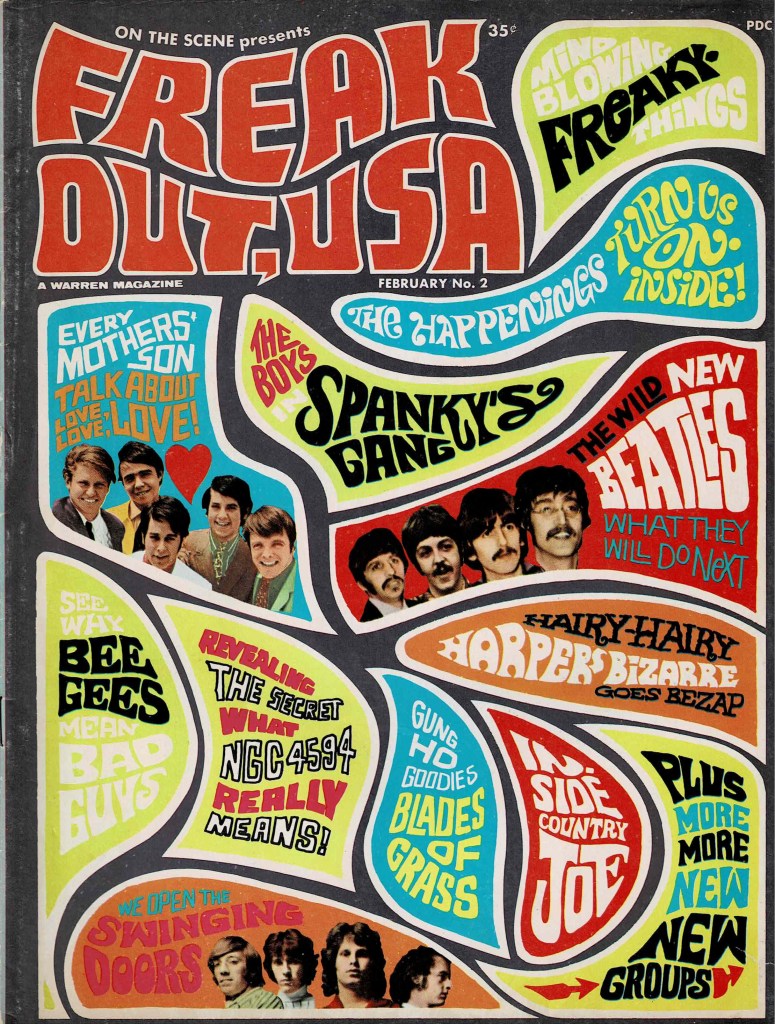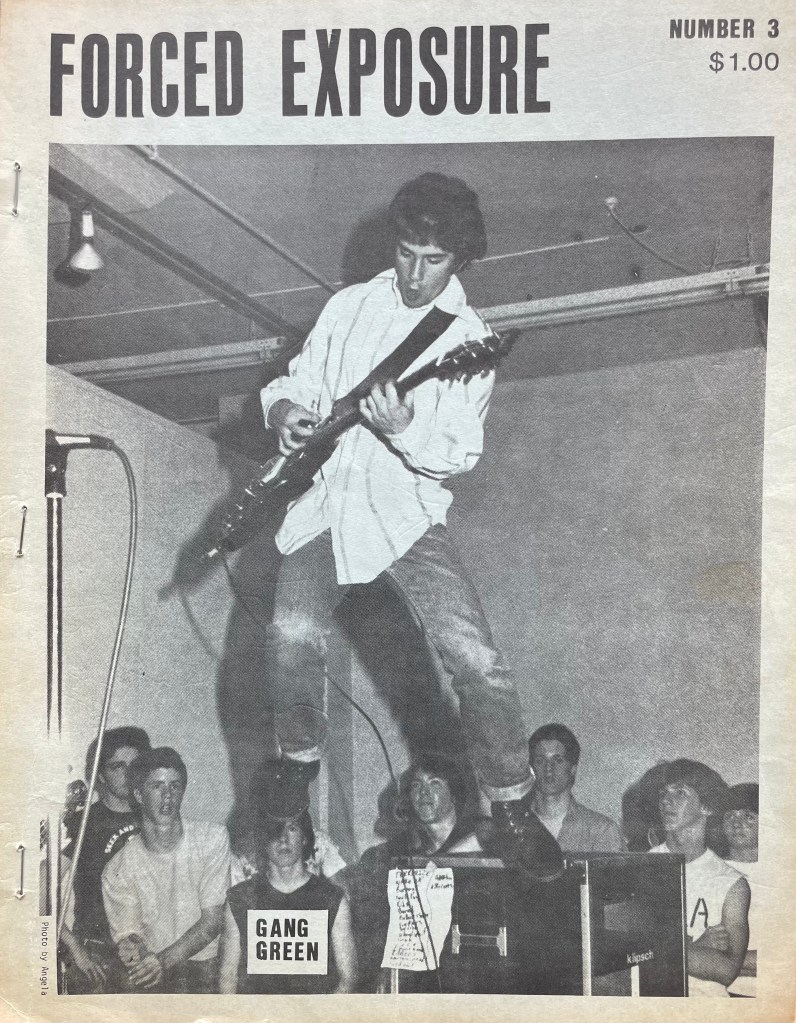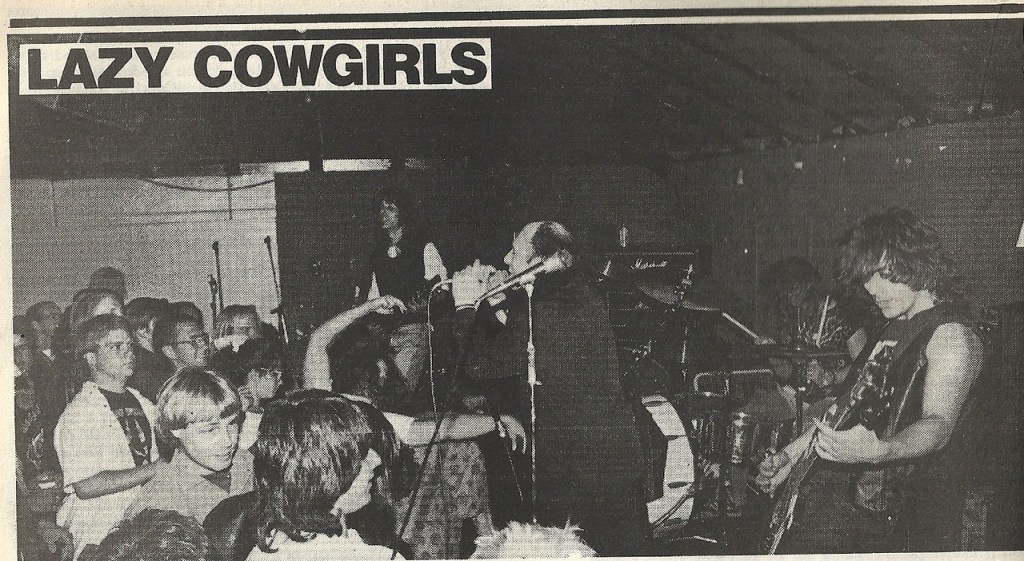Since I only possess three issues of late 80s Flesh and Bones, and because I already covered Flesh and Bones #6 here and Flesh and Bones #7 here, I don’t reckon it’ll be worth me going into too many background details in order to tackle their ultimate issue, Flesh and Bones #8, the classy cover from which you see here. Instead, perhaps we should ask: how was it that so many hardcore punk fiends from 1982-84 became longhaired, heavy metal-adjacent grunge & hesh rock fiends just a couple years later? This very much includes myself, minus the long hair and the taste for metal.
At the end of the day, it’s because it’s the place where dumb, primal, post-teenage testosterone was finding the most logical home to roost circa 1987-89. If not Green River and Mudhoney, then certainly the more abrasive Touch & Go stable that for me was best defined by the Laughing Hyenas, Killdozer and Big Black. All of the aforementioned were total godz to me then, and thus, Flesh and Bones was one of the music fanzines I was most excited to buy when I’d see it at Rhino or Aron’s in Los Angeles. The touring/booking networks and the nationwide club circuit plowed up by hardcore was still very much in existence, and labels like Touch & Go, Homestead, SST and Sub Pop had more money in their pockets than ever before (Sub Pop, of course, was really just getting off the ground at this time).
Flesh and Bones #8 editor Jeffo, as I’ve discussed, had an innate knack for grafting together his main obsessions into a unified universe of his own making. These would be idiotic 1970s hard rock, comics/comix, 60s hippie/freak/teen stuff and the 1980s hardcore punk he was weaned on – and then spit it out into a wild, page-count-heavy fanzine packed with any modern bands traveling on this same wavelength. Redd Kross around this era would be a great “comp”. White Zombie when they were starting up. And of course Raging Slab.
This one from January 1989 was his final issue. There’s a lot of tomfoolery afoot. The first interview is with Sloth, a longhaired glammy/riff-heavy punk band whom I liked and whom I saw live at The Chatterbox in San Francisco not long after this. Going with the “if it has long hair, looks like it might smell bad, and plays loud rock music – it’s in!” vibe, there’s next a thing about a group of festival hippies called Magic Mushroom, and pictures of them at the Glastonbury Festival (Summer Solstice 1971), really for no reason at all.
In the extensive “Nothing But 8-Tracks” record review section, it’s most of the current typical current noise/grunge/punk, but then Jeffo will sneak in a review of some food or beverage, such as his one on Mickey’s Malt Liquor, otherwise known far and wide as “Mickey’s Big Mouth” due to the wide opening of each jug-sized bottle. Apparently it was pretty rare on the East Coast. “The more vulgar of brew-consumers will tell you that the main draw behind Mickey’s is that after you drain its contents you can use the bottle to hold your own golden ale”. Well, that may be true, but honestly, in the late 80s, when craft beer and microbreweries were barely in existence, Mickey’s was also just “upscale” enough for those of us not wanting to plod through yet another Stroh’s or Meister Brau. The beer still exists!
As a non-tangential aside, I had a bit of a Southern California “police story” around this time, a couple years before. My friends and I took my 1980 Ford Mustang to the Oxnard Skate Palace in beautiful Oxnard, California to see The Butthole Surfers, Dag Nasty, Aggression and Uniform Choice. We packed my car with Mickey’s Big Mouth, and upon arrival, thereby commenced to drink (and drink heavily) in the parking lot of the Skate Palace, like morons. Since I’ve learned that this show was on April 4th, 1987, this meant that I was 19 years old. It wasn’t three minutes before cop flashlights were shining into the car, and we were all made to sheepishly get out and show our IDs. “How’d you all like to go to JAIL tonight?”, we were asked. Upon studying my ID – I was probably the youngest – I was told “You – you shouldn’t be drinking at all”. Absolutely not sir, a big mistake on my part. I think I was most worried about missing the show, to be honest, but all we really got for our idiocy was that we had to slowly pour out about 12 Mickey’s in front of the cops before we’d even gotten a buzz on. We understood we were fighting a war that we couldn’t win, you might say. And we still had a lot to learn about State Violence/State Control.
But back to Flesh and Bones #8, right? While it wasn’t really a magazine I looked at to figure out which new bands to listen to, the whole was far greater than the sum of its parts. There’s are interviews with and/or things on Gwar, The Lunachicks, Dave Brock from Hawkwind, the Tater Totz, Reverb Motherfuckers, Soundgarden, The Hickoids (with jokes about Molly Hatchet), Gary Panter and a film column by Howie Pyro, reviewing “mondo” films like Shanty Tramp and Mantis in Lace. Laurie Es is a big contributor. There’s a piece of fiction called “Hurricane” by “Chris T”, which I believe was meant to be a Forced Exposure parody.
Those are all just seat-fillers for the three best parts. First, the interview with JD King, comix artist and once-bandmate of Thurston Moore’s in The Coachmen. King reads from Thurston’s letters that he’d written to him from around that time – 1977-78 – show reviews in which Moore says things like “Talking Heads are my main influence in life”, or, regarding The Cramps, “Everybody hates this band. They’ll never record. The worst band ever to be on stage. I dig them. I know they can’t play”. Second, the outstanding piece by Dr. Buzz called “Snarfin’ at the End of Aisle Eight – A Guide to Household Inhalants”, which talks about the relative merits of inhaling Lemon Pledge vs. Aqua Net vs. Easy-Off Oven Cleaner. Who knew so much joy was to be had just below our kitchen sink in the 1980s.
Finally, the live reviews in Flesh and Bones were always the best, almost completely made up as they were with totally imaginary hijinks and shenanigans. I’ve particularly been enamored with this one from a 1988 Firehose, Volcano Suns, Screaming Trees and Dos show at Irving Plaza in NYC for years: “By now, Irving Plaza is supposed to be leveled to make way for a parking deck, so who knows how many straight-edge ghosts are wandering the ruins, ready to spook any vino-breathing bum that happens to wander into their concrete haunt, Back in the old days, this place was host to many a cola fest featuring real fighting bands like Minor Threat and SS Decontrol. Far cry from the fistless poop making the round today….So anyway, I walked up the stairs to the main room not expecting trouble (I’m not the kind of guy that looks for fights) when suddenly, this skinhead wearing a ‘Doc Marten’ sweatshirt stepped out of the shadows and growled ‘You the dude who does Flesh+Bones?’ ‘Ye-eah’, I managed to stammer. ‘Well this is for Springa!’, he replied, and smacked me in the face with a magic-marker x-ed fist. The force of the punch sent me tumbling down the stairs again. Luckily, I was wearing my shlep-rock parka with the big furry hood, so it helped cushion my fall. By the time I made it up the stairs again, the guy was gone (sissy!) and DOS were playing their last song. This tall guy in a Big Stick wig kept heckling Kira, shouting ‘Show us your underwear!’ and ‘Kira’s got the 10½!’”….and it goes on from there with multiple lies that I’m sure turned an entirely mediocre show into one much more exciting.
Flesh and Bones was one of the greats, and I strongly encourage you to grab any you find on eBay that might lie within your self-appointed price range. Do it for Springa.

